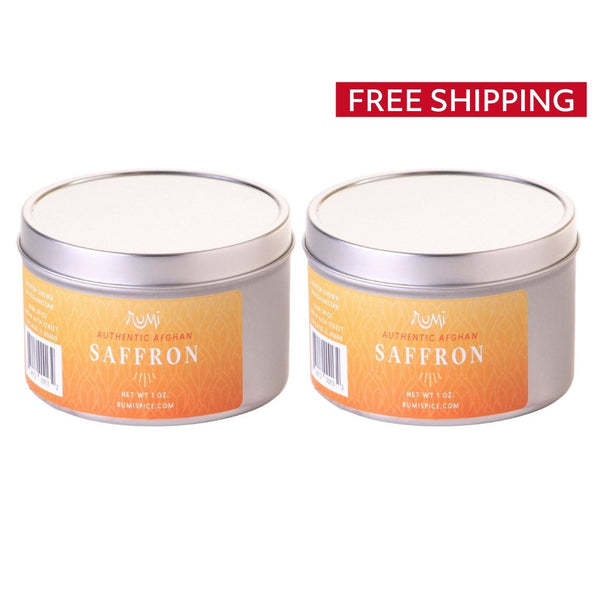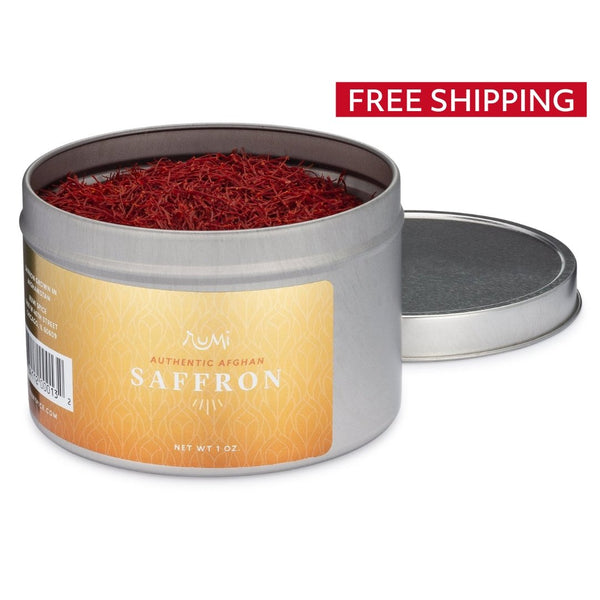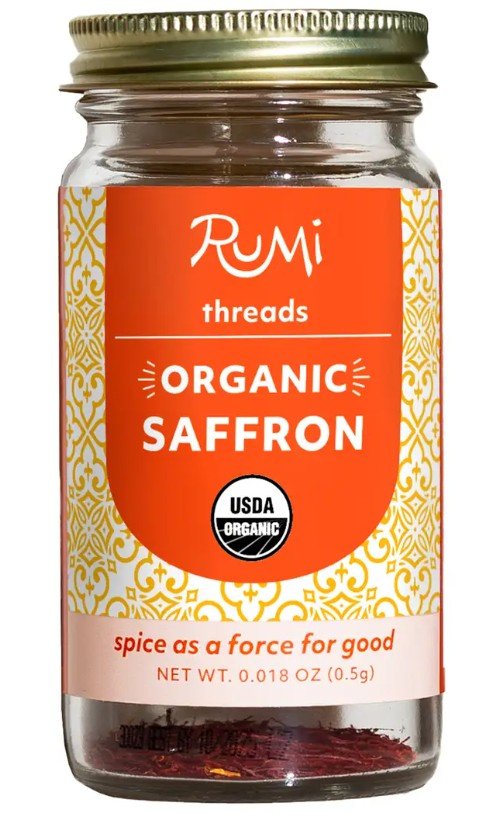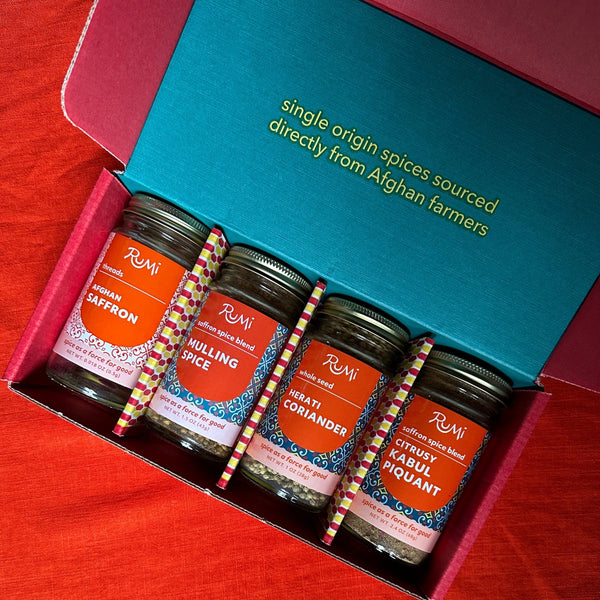Everything you Need to Know About Saffron
Getting Back to the Basics of Saffron
Did you know saffron is nicknamed “red gold” and “the queen of all spices.” It’s also worth its weight in gold, but do you know why? Consider this your go-to guide for all things saffron. From its origins to its taste and uses, our team is putting the spotlight on our premium, hand-harvested Afghan saffron: 
What is saffron?
Saffron is one of the most precious spices in the world. Used by ancient icons such as Cleopatra and Alexander the Great, saffron truly is a one of a kind spice. It has an extremely subtle, yet fragrant taste that is slightly sweet and floral. Saffron adds a layer of depth to any dish.
Where does saffron come from?
Saffron is the harvested stigma of the autumn crocus flower, more commonly referred to as saffron crocus. It is believed saffron originated in ancient Greece, but today it is grown in countries with arid climates like Afghanistan, India, Iran, Greece, and Morocco. In fact, with hot, dry winds over semi-arid lands, Afghanistan's growing region is ideal for growing saffron.
Why is saffron so expensive?
Each autumn crocus flower produces only three (that’s right three) stigma at a time. This means it takes about 80,000 flowers to produce just one pound of saffron. Think of it this way, the pinch of saffron you add to your favorite Spanish seafood paella dish has come from roughly 20 stigma from seven different saffron crocus flowers. A labor of love, all of these stigmas are picked, processed, and cleaned by hand. Now you may be getting a better idea of why this spice is the most expensive spice in the world! Hey, it’s not called the Queen of Spices for nothing after all.
What does saffron taste like?
Saffron has a sweet, floral taste to it. It’s earthy and has a complex nuanced flavor. On the other hand, saffron that tastes bitter, metallic, or plastic like are often cheap imitators of this unique spice and should be avoided. Some of our favorite saffron dishes include Spanish Seafood Paella, Saffron Shrimp Succotash and Saffron Buttermilk Lemon Pie.
How do I know my saffron is authentic?
When you’re spending money on saffron, it’s important to spend it on the best quality saffron that comes from a supplier you can trust. Our team here at Rumi Spice goes to great lengths to ensure our Afghan saffron is the best tasting saffron and is always consistently high in quality.
Due to the spice's high value, the adulteration of saffron is prevalent in the spice industry. Far too often it is cut with safflower (even corn husks dyed crimson) to make up for its high production costs.
The best and most authentic saffron should be a deep red with orange or yellow tips. If your jar of saffron is completely red, that’s usually a good indicator that the supplier died the batch to cover up impurities, additives, or a low quality crop. Additionally, saffron that looks frayed, worn or has plenty of pale streaks are all indicators of poor quality saffron. If you still aren’t sure on the quality of your saffron you can conduct two easy at home tests.
Saffron Test #1: Sight
Take a few saffron threads and soak them in hot (not boiling) water for 5 to 20 minutes.
Fake saffron will quickly bleed out its artificial red dye and the threads will disintegrate, while real saffron will remain intact. High quality saffron will also emit an even and uniform yellow color throughout the water. The color from the saffron will evenly diffuse into the water as it disperses similar to tea.
Saffron Test #2: Taste
You can also test the differences in the taste profiles. The test water of the fake saffron will either lack flavor entirely or have a bitter metallic taste. Real saffron will have a strong floral scent while the test liquid will have a floral and earthy taste.
Here’s an example of what to watch for when conducting these at-home tests.
Are there nutritional benefits to saffron?
Saffron has been used in traditional medicines for millennia from Persian to Indian cultures. Its been used for hundreds of years to treat an extensive number of ailments, including asthma, cough, heartburn, insomnia, depression, Alzheimer’s disease, dry skin, and cardiovascular ailments. Many cultures brew saffron as a tea or in a saffron milk to reap all of the medicinal benefits of this spice. In some areas of the world, people even apply saffron directly to the scalp as a cure for baldness. Today, many believe in saffron’s calmative, anti-inflammatory, and anti-depressant effects. Some more recent studies have even pointed to saffron as a natural mood enhancer.
How do you use saffron?
Saffron is most commonly used to add a distinct, yet subtle flavor to dishes to enhance their taste. Check out our extensive recipe database for some traditional and unique dishes to make using your new favorite spice.
Cooking Tip: With the aroma and flavor profile that Rumi Spice saffron provides, you only need 8-12 threads when cooking rice or risotto for two. For non-liquid recipes or baking, crush the threads with a mortar and pestle to a powder-like consistency to bring out the saffron's full flavor profile.The amount of saffron varies by recipe, but a healthy pinch of saffron is a solid benchmark.
Rumi Spice Saffron
Saffron may have a complex flavor, but that doesn’t mean it has to be complicated!
A big part of Rumi Spice's mission is to provide consumers with not only the highest grade in spices, but with a totally transparent supply chain. With Rumi Spice you're getting 100% saffron, 100% of the time.
If you are interested in trying high quality Afghan saffron for yourself, we recommend starting out with a 0.5 gram jar, but if you already know you love the bold, rich flavor of this premium spice, stock up with a 1-ounce tin.
If you have any more questions about saffron, please feel free to contact us or drop us a line on Facebook or Instagram.





